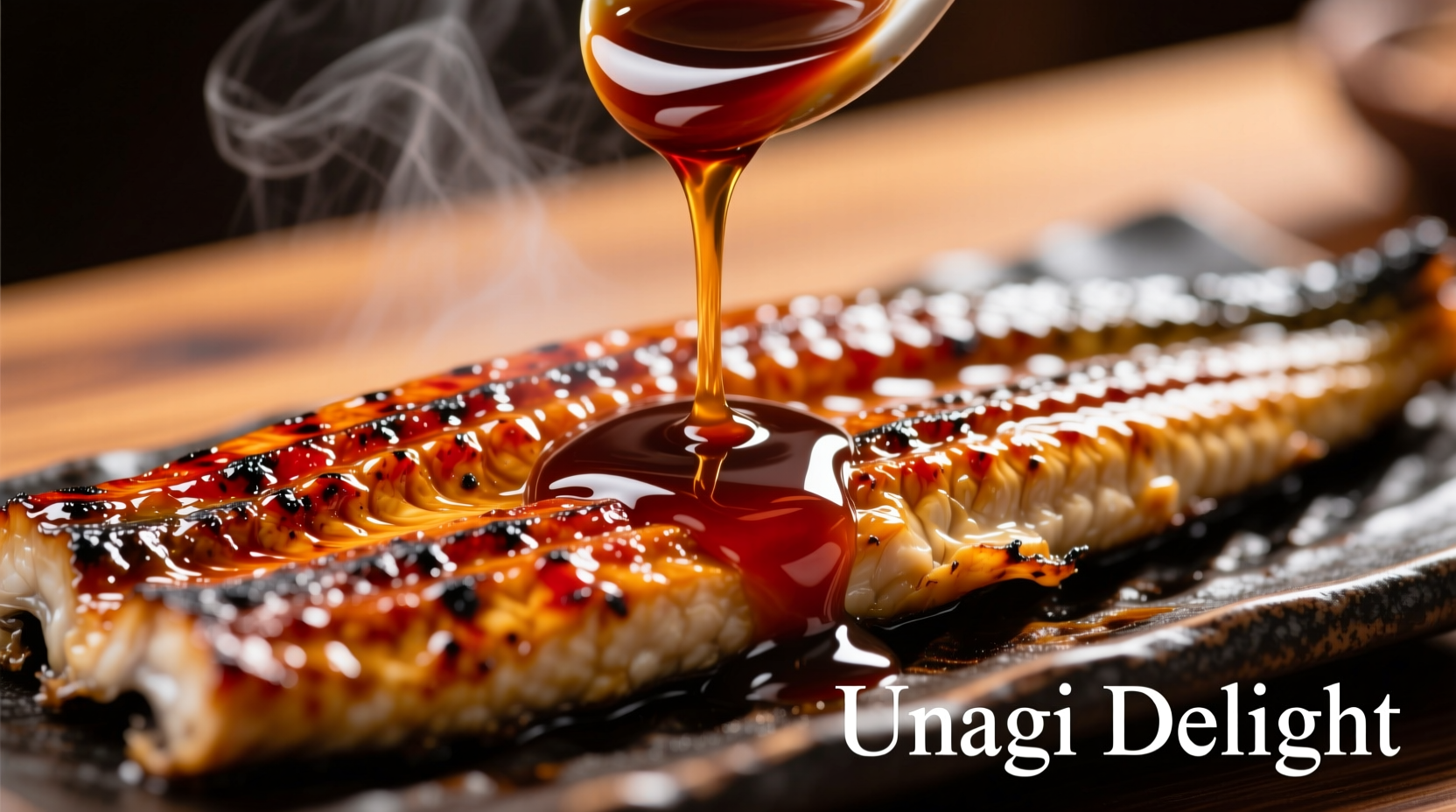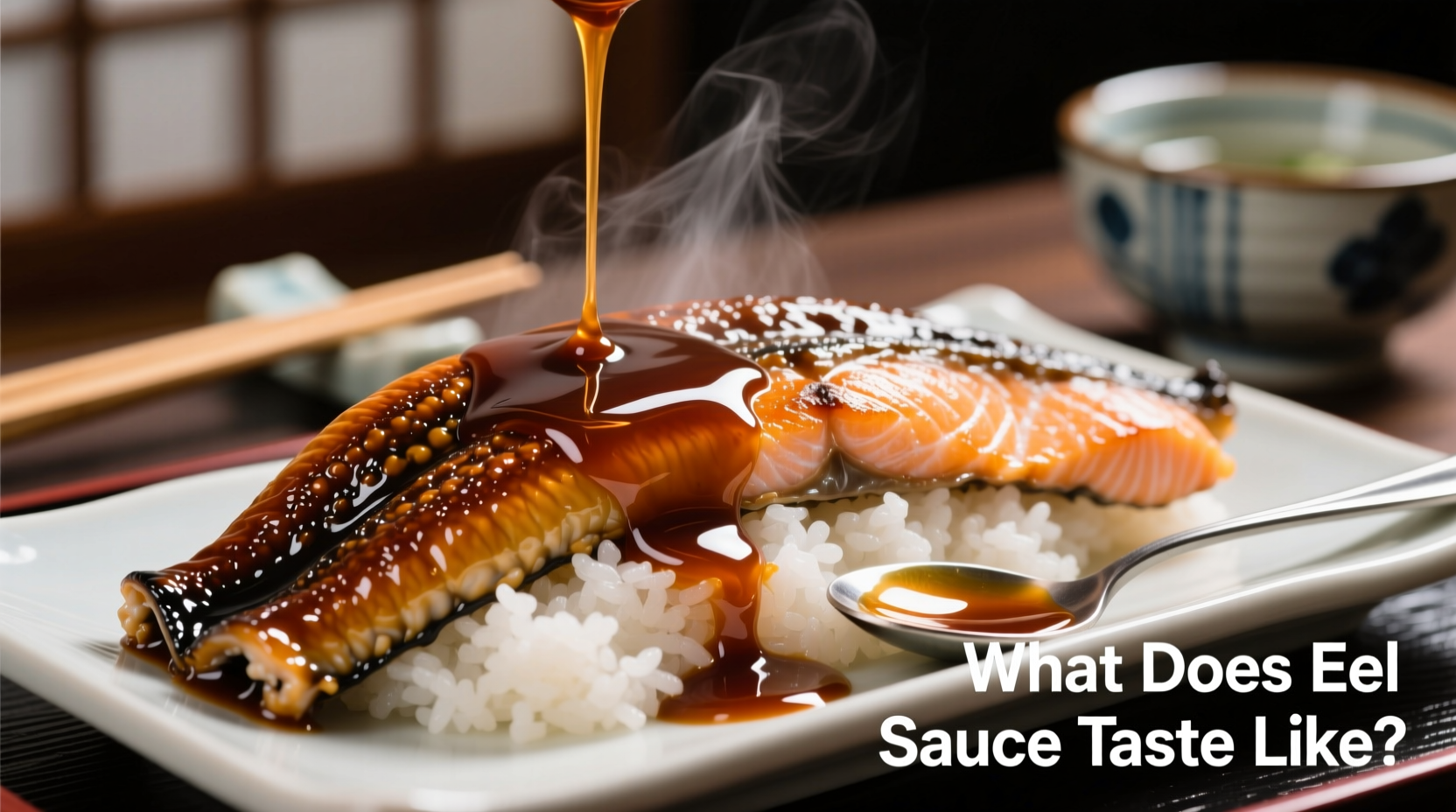If you've ever wondered what gives Japanese grilled eel its irresistible glossy finish and deep flavor, you've encountered eel sauce. This versatile condiment, known as nitsume in Japan, creates that signature sweet-savory coating that makes unagi dishes so memorable. While it's traditionally paired with freshwater eel, modern cooks use it across countless applications from sushi toppings to marinades for vegetables and proteins.
The Core Flavor Profile Explained
Eel sauce offers a sophisticated balance that defines Japanese umami cuisine. Unlike Western barbecue sauces that rely heavily on tomato or vinegar, authentic eel sauce achieves depth through four key elements:
- Sweetness from caramelized sugar and mirin's natural glucose
- Saltiness from premium soy sauce (typically koikuchi shoyu)
- Umami richness developed through slow reduction of amino acids
- Subtle acidity from sake fermentation byproducts
The magic happens during the reduction process. When soy sauce, mirin, sugar, and sake simmer together for 20-30 minutes, Maillard reactions create complex flavor compounds that transform simple ingredients into a multidimensional glaze. The final product should coat the back of a spoon with a consistency similar to warm honey.
Does Eel Sauce Actually Contain Eel?
Despite its name, traditional eel sauce contains no eel whatsoever. The misnomer stems from its primary culinary application—glazing grilled freshwater eel (unagi) in Japanese cuisine. Historical records from the Edo period (1603-1868) show cooks developed this sweet soy reduction specifically to complement eel's rich, fatty texture. The Japan External Trade Organization confirms that authentic nitsume recipes have always been plant-based, with the name simply indicating its intended use rather than ingredients.
| Sauce Type | Sweetness Level | Primary Flavor Notes | Best Culinary Applications |
|---|---|---|---|
| Authentic Eel Sauce | Moderate-High | Caramelized umami, subtle mirin sweetness | Unagi, tamagoyaki, grilled mushrooms |
| Teriyaki Sauce | High | Bold sweetness, pronounced ginger notes | Chicken, salmon, stir-fries |
| Ponzu Sauce | Low | Citrus-forward, clean soy tang | Dipping sauces, ceviche, dressings |
| Hoisin Sauce | Moderate | Fermented bean, five-spice complexity | Peking duck, spring rolls, marinades |
How Eel Sauce Evolved Through Japanese Culinary History
The development of eel sauce reflects Japan's sophisticated approach to flavor balancing. During the Edo period, street food vendors (yatai) began serving grilled eel as affordable protein. Historical documents from the Tokyo Metropolitan Government's culinary archives show that early versions used simple mixtures of soy sauce and sugar. The addition of mirin in the Meiji era (1868-1912) created the smoother, more complex profile we recognize today. Modern chefs often enhance traditional recipes with small amounts of grated ginger or kombu for additional umami depth, though purists maintain the classic four-ingredient formula remains unmatched.

Practical Applications Beyond Eel
While traditionally paired with unagi, eel sauce's versatility makes it valuable in any kitchen. Professional chefs recommend these applications:
- Sushi enhancement – Brush lightly on tamago (sweet omelet) or drizzle over nigiri
- Vegetable glaze – Perfect for roasted mushrooms, eggplant, or asparagus
- Marinade base – Combine with sesame oil for chicken or tofu
- Dipping sauce – Mix with rice vinegar for spring rolls or dumplings
When using store-bought versions, check labels carefully. Many commercial products contain artificial flavors, corn syrup, or thickeners that alter the authentic flavor profile. The Japanese Culinary Academy recommends choosing sauces listing only soy sauce, sugar, mirin, and sake as ingredients for the most authentic taste experience.
What to Look for When Buying or Making Eel Sauce
Whether purchasing or preparing eel sauce, these quality indicators ensure authentic flavor:
- Texture – Should coat the back of a spoon without being overly thick
- Color – Deep amber, not dark brown or blackened
- Aroma – Sweet caramel notes with subtle soy fragrance
- Aftertaste – Clean finish without chemical or artificial sweetness
Homemade versions typically outperform store-bought options. A simple recipe combines equal parts soy sauce and mirin with half parts sugar, simmered gently for 20 minutes. For restaurant-quality results, the Umami Information Center recommends adding a 2-inch kombu strip during simmering, removed before the final reduction stage.
Common Misconceptions and Usage Tips
Many home cooks make these common mistakes with eel sauce:
- Over-application – Its concentrated flavor works best as a finishing glaze
- Confusing with teriyaki – Teriyaki contains additional ingredients like garlic and ginger
- Using expired product – Opened bottles should be refrigerated and used within 3 months
- Applying during high-heat cooking – Sugar content can burn easily
For best results, apply eel sauce during the final minute of grilling or as a finishing drizzle. When stored properly in the refrigerator, homemade versions maintain peak flavor for 2-3 weeks, while commercial products typically last 3-6 months after opening.











 浙公网安备
33010002000092号
浙公网安备
33010002000092号 浙B2-20120091-4
浙B2-20120091-4